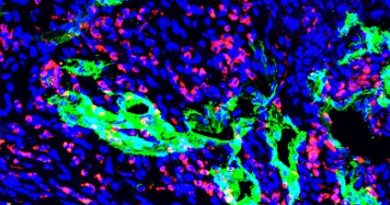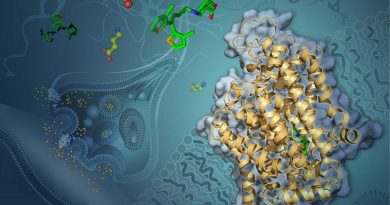Kidney Policy Increases Patient Referrals, Evaluations
Following implementation of the kidney allocation system (KAS) in 2014, dialysis facilities referred more new dialysis patients and transplant centers evaluated more new patients even though fewer evaluated patients were placed onto the transplant waitlist, analysis of data from three southeastern states shows.
“Nationally, we have seen declines in waitlisting, which is an unintended consequence of this policy change. There is less urgency to waitlist patients earlier because they are not accruing time on the list based on the date they were placed on the list,” Rachel Patzer, PhD, MPH, Emory University School of Medicine, Atlanta, Georgia, told Medscape Medical News in an email.
“And lower rates of active waitlisting could be a good — or a bad — thing,” she added. As Patzer went on to explain, active listing usually means that the patient has gone through all their medical evaluation appointments and is ready to accept a kidney; if they are “inactive” on the waiting list, patients are not eligible to receive a transplant. “For the patient, being inactively waitlisted is not a good thing,” she stressed.
Some patients are on the waiting list for many years, and because of this, transplant centers may be listing more patients as “inactive” to prevent the multiple evaluation visits that would be necessary if the patient made it again to the top of the waiting list. “Our results suggest this is what could be happening,” Patzer said, “and they align with the hypothesis that the reduced urgency to waitlist patients as active is due to this policy change.”
The study was published online March 14 in the American Journal of Kidney Disease.
New Policy Affects Kidney Allocation
In 2014, the Organ Procurement and Transplantation Network of the United Network for Organ Sharing implemented a new policy that substantially affected the way kidneys are allocated. This policy was implemented to improve equity in access to transplantation.
“The most significant change was how allocation time, the primary determinant of priority for organ allocation, was calculated,” the authors explain. In short, the policy changed the start of the allocation time from the date of waitlisting to the date of dialysis initiation, largely to offset any disadvantages resulting from delayed referral and evaluation that disproportionately affected racial minorities.
The study aim was to assess the impact of the 2014 KAS policy change on referral and evaluation rates for transplantation among a population of both incident (new) and prevalent (existing) patients, the authors explain. All new patients who initiated maintenance dialysis between January 2012 and December 2016 in dialysis facilities in Georgia and North and South Carolina were included in the analysis.
The final cohort consisted of 37,676 patients. “The primary outcome variable was referral for kidney transplantation from a tristate dialysis facility to a tristate transplant center,” Patzer and colleagues note. A total of 43.4% of patients were referred, 52.4% of those referred started transplant evaluation, and 35.2% of evaluated patients were waitlisted during the study period. As Patzer explained, the evaluation steps needed to be eligible for a transplant are complex and take many months.
In the Southeastern US, it takes about 3 months from the referral, typically from a dialysis facility, for those who are already in end-stage kidney failure, or at a chronic kidney disease clinic, for those who have not yet started dialysis, for a patient to start the transplant evaluation process at a transplant center.
“Then, on average, it takes another 6 months for patients to complete the required medical, psychosocial, and financial evaluation to present to a multidisciplinary waitlisting conference to determine whether the patient is a good candidate to put on the waiting list,” Patzer explained.
In an adjusted analysis, KAS had a positive 16% association with both referral and evaluation, at an adjusted hazard ratio (HR) of 1.16, but a 30% negative association with overall waitlisting, at an aHR of 0.70, the authors report. Evaluated patients also had a 29% lower active waitlisting rate at an aHR of 0.81 post- versus pre-KAS, they add. Among patients who were evaluated, post-KAS was also associated with a 51% lower inactive waitlisting rate compared with pre-KAS levels.
Existing Dialysis Patients
In the prevalent (existing dialysis) population, KAS was associated with a nonsignificant increase in referral and had no impact on evaluation starts, but was associated with both a 74% higher waitlisting rate and twice as high active waitlisting rates compared with pre-KAS levels. Slightly over half of facilities increased their referrals post-KAS, although only by about 14%, investigators note, while close to 40% of facilities decreased their referrals following implementation of KAS, but again, only by about 10%.
A small percentage of facilities had no increase or decrease in referrals. The median time from referral to waitlisting increased by 6 months post-KAS compared to a median of 4.6 months pre-KAS (P < .001). The proportion of patients who were preemptively referred also increased slightly but significantly to 19.6% following implementation of KAS from 18% pre-KAS (P < .001).
As Patzer explained, the prevalent population is a population that has been on dialysis for multiple years, so under the new policy, those with the longest time on dialysis should go to the top of the waiting list. “It is encouraging to see that we have an increase in waitlisting among this group, and it suggests that transplant centers are prioritizing waitlisting and actively waitlisting patients with longer times on dialysis since the implementation of the kidney allocation policy,” she observed.
At the same time, the fact that referral and evaluation starts did not increase since the implementation of the policy in the same population suggests that experts need to do more earlier on in prevalent patients to ensure those who have been on dialysis for several years and who are good transplant candidates are being referred by their providers in dialysis facilities. “In addition, it’s important for dialysis facility social workers and clinical staff to monitor whether patients are starting the transplant evaluation process after being referred,” Patzer added.
“More work needs to be done to address the barriers to getting [these] patients referred,” she emphasized.
The study was funded by a grant from the National Institute on Minority Health and Health Disparities.
Patzer has reported no relevant financial relationships.
Am J Kidney Dis. Published online March 14, 2022. Abstract
Follow Medscape on Facebook, Twitter, Instagram, and YouTube.
Source: Read Full Article



